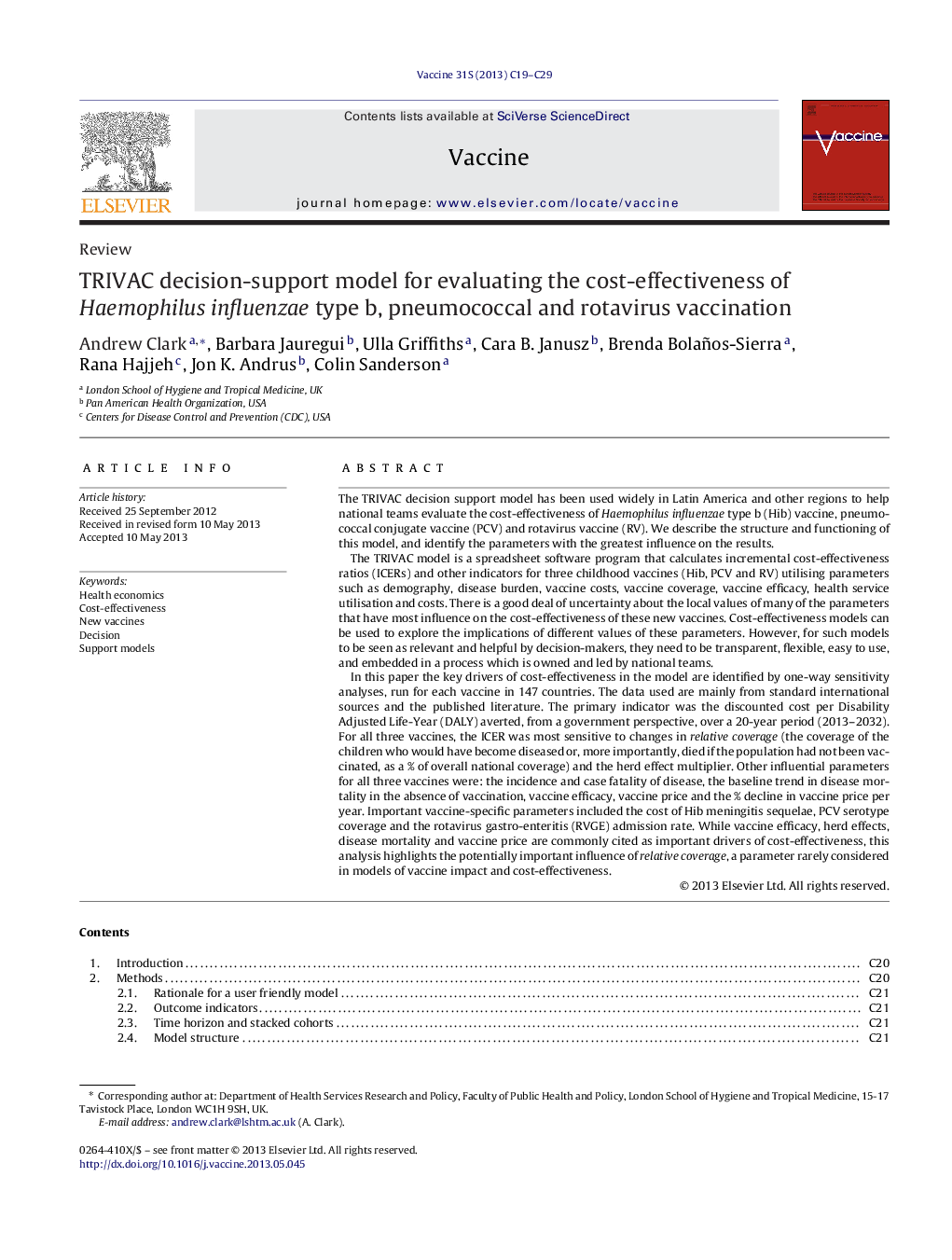| کد مقاله | کد نشریه | سال انتشار | مقاله انگلیسی | نسخه تمام متن |
|---|---|---|---|---|
| 2402539 | 1102809 | 2013 | 11 صفحه PDF | دانلود رایگان |

• We describe the TRIVAC model for evaluating the cost-effectiveness of 3 childhood vaccines.
• We examine the key drivers of the TRIVAC decision support model.
• Cost-effectiveness ratios were most sensitive to changes in relative coverage and the herd effect multiplier.
• Identifying the key drivers helps to prioritise influential parameters for data collection.
The TRIVAC decision support model has been used widely in Latin America and other regions to help national teams evaluate the cost-effectiveness of Haemophilus influenzae type b (Hib) vaccine, pneumococcal conjugate vaccine (PCV) and rotavirus vaccine (RV). We describe the structure and functioning of this model, and identify the parameters with the greatest influence on the results.The TRIVAC model is a spreadsheet software program that calculates incremental cost-effectiveness ratios (ICERs) and other indicators for three childhood vaccines (Hib, PCV and RV) utilising parameters such as demography, disease burden, vaccine costs, vaccine coverage, vaccine efficacy, health service utilisation and costs. There is a good deal of uncertainty about the local values of many of the parameters that have most influence on the cost-effectiveness of these new vaccines. Cost-effectiveness models can be used to explore the implications of different values of these parameters. However, for such models to be seen as relevant and helpful by decision-makers, they need to be transparent, flexible, easy to use, and embedded in a process which is owned and led by national teams.In this paper the key drivers of cost-effectiveness in the model are identified by one-way sensitivity analyses, run for each vaccine in 147 countries. The data used are mainly from standard international sources and the published literature. The primary indicator was the discounted cost per Disability Adjusted Life-Year (DALY) averted, from a government perspective, over a 20-year period (2013–2032). For all three vaccines, the ICER was most sensitive to changes in relative coverage (the coverage of the children who would have become diseased or, more importantly, died if the population had not been vaccinated, as a % of overall national coverage) and the herd effect multiplier. Other influential parameters for all three vaccines were: the incidence and case fatality of disease, the baseline trend in disease mortality in the absence of vaccination, vaccine efficacy, vaccine price and the % decline in vaccine price per year. Important vaccine-specific parameters included the cost of Hib meningitis sequelae, PCV serotype coverage and the rotavirus gastro-enteritis (RVGE) admission rate. While vaccine efficacy, herd effects, disease mortality and vaccine price are commonly cited as important drivers of cost-effectiveness, this analysis highlights the potentially important influence of relative coverage, a parameter rarely considered in models of vaccine impact and cost-effectiveness.
Journal: Vaccine - Volume 31, Supplement 3, 2 July 2013, Pages C19–C29